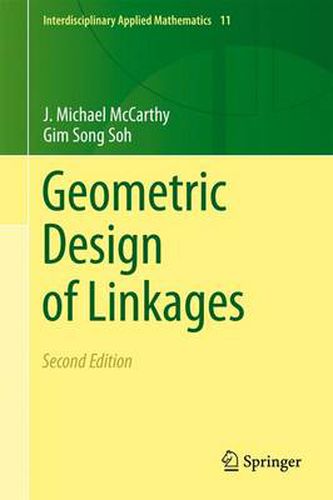Readings Newsletter
Become a Readings Member to make your shopping experience even easier.
Sign in or sign up for free!
You’re not far away from qualifying for FREE standard shipping within Australia
You’ve qualified for FREE standard shipping within Australia
The cart is loading…






This title is printed to order. This book may have been self-published. If so, we cannot guarantee the quality of the content. In the main most books will have gone through the editing process however some may not. We therefore suggest that you be aware of this before ordering this book. If in doubt check either the author or publisher’s details as we are unable to accept any returns unless they are faulty. Please contact us if you have any questions.
This book is an introduction to the mathematical theory of design for articulated mechanical systems known as linkages. The focus is on sizing mechanical constraints that guide the movement of a work piece, or end-effector, of the system. The function of the device is prescribed as a set of positions to be reachable by the end-effector; and the mechanical constraints are formed by joints that limit relative movement. The goal is to find all the devices that can achieve a specific task. Formulated in this way the design problem is purely geometric in character. Robot manipulators, walking machines, and mechanical hands are examples of articulated mechanical systems that rely on simple mechanical constraints to provide a complex workspace for the end- effector. The principles presented in this book form the foundation for a design theory for these devices. The emphasis, however, is on articulated systems with fewer degrees of freedom than that of the typical robotic system, and therefore, less complexity. This book will be useful to mathematics, engineering and computer science departments teaching courses on mathematical modeling of robotics and other articulated mechanical systems.
This new edition includes research results of the past decade on the synthesis of multi loop planar and spherical linkages, and the use of homotopy methods and Clifford algebras in the synthesis of spatial serial chains. One new chapter on the synthesis of spatial serial chains introduces numerical homotopy and the linear product decomposition of polynomial systems. The second new chapter introduces the Clifford algebra formulation of the kinematics equations of serial chain robots. Examples are use throughout to demonstrate the theory.
$9.00 standard shipping within Australia
FREE standard shipping within Australia for orders over $100.00
Express & International shipping calculated at checkout
This title is printed to order. This book may have been self-published. If so, we cannot guarantee the quality of the content. In the main most books will have gone through the editing process however some may not. We therefore suggest that you be aware of this before ordering this book. If in doubt check either the author or publisher’s details as we are unable to accept any returns unless they are faulty. Please contact us if you have any questions.
This book is an introduction to the mathematical theory of design for articulated mechanical systems known as linkages. The focus is on sizing mechanical constraints that guide the movement of a work piece, or end-effector, of the system. The function of the device is prescribed as a set of positions to be reachable by the end-effector; and the mechanical constraints are formed by joints that limit relative movement. The goal is to find all the devices that can achieve a specific task. Formulated in this way the design problem is purely geometric in character. Robot manipulators, walking machines, and mechanical hands are examples of articulated mechanical systems that rely on simple mechanical constraints to provide a complex workspace for the end- effector. The principles presented in this book form the foundation for a design theory for these devices. The emphasis, however, is on articulated systems with fewer degrees of freedom than that of the typical robotic system, and therefore, less complexity. This book will be useful to mathematics, engineering and computer science departments teaching courses on mathematical modeling of robotics and other articulated mechanical systems.
This new edition includes research results of the past decade on the synthesis of multi loop planar and spherical linkages, and the use of homotopy methods and Clifford algebras in the synthesis of spatial serial chains. One new chapter on the synthesis of spatial serial chains introduces numerical homotopy and the linear product decomposition of polynomial systems. The second new chapter introduces the Clifford algebra formulation of the kinematics equations of serial chain robots. Examples are use throughout to demonstrate the theory.